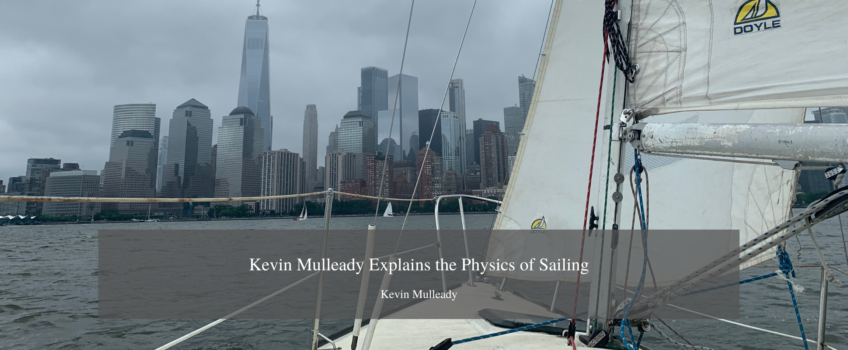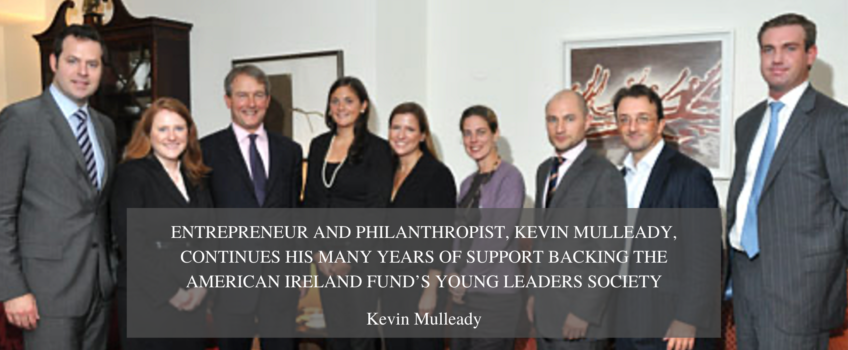|
Being heavily involved with business development for over 25 years, Kevin Mulleady understands how to effectively lead a team. Of the various organizations he has successfully built, one particular business model that Kevin Mulleady advocates for is a merit-based system. The overarching theme of this business model follows the principle, “credit is paid where credit is due”. In other words, merit-based businesses recognize and reward quality workmanship by operating on performance-based pay, rather than a standard salary – motivating employees to build strong skill sets and achieve higher goals for the betterment of the company and themselves. Here, Kevin Mulleady further discusses the power of a merit-based business.
Establishes an Even Playing Field Life is often not fair, however; this should not be the case when growing a company by means of recruiting, hiring, and promoting employees. Kevin Mulleady believes in embracing diversity in the workplace and advocates that credit be appropriately served to the individuals with the best ideas. Regardless of the individual’s background, ethnicity, age, gender, etc., the only factors that should be weighted are their professional performance and commitment to the company. As long as strong measurables are in place to prevent subjective favoritism, merit-based businesses create an even playing field where each team player has equal opportunity to become an all-star. Encourages & Builds Motivation Another great aspect of running a merit-based business is that it motivates employees to achieve expectations. When an individual understands that their compensation and role in the company is directly correlated with their performance, they take significant ownership in their work. Furthermore, by incentivizing in this manner, employees naturally strive to hit above their targets – transforming them into high performers of top-notch talent. Allows for Appropriate Compensation In a merit-based system, employees are often assessed on the basis of their professional performance, allowing for more appropriate compensation. This holds true as those who recognize and act on the equal opportunity for performance-based pay are those who tend to work smarter, bring in new ideas, and add significant value to the company. Thus, these individuals deserve compensation that is more in-line with their professional capabilities and accomplishments, which are directly reflected in the increased value of the company. Kevin Mulleady believes that using this business model holds employees accountable for their work and grants them the opportunity to be appropriately compensated for their achievements. Determines the Weak Links Another point that Kevin Mulleady makes is that regular, salary-based pay systems can sometimes make it difficult to pinpoint underperformers. And since the performance of each employee has a direct impact on the success of the company and its operations, it is imperative to know where the weak links are in the chain. In retrospect, a merit-based business model allows employers to differentiate those who are high performers from those who are lacking in this regard. Kevin Mulleady explains that by operating in this capacity, business owners and employers can more effectively establish interventions on how to improve employee performance, as well as determine which individuals deserve a demotion or promotion. Assists in Retention Since these merit-based systems reward those of optimal performance, be it on the basis of talent, specific skill set, workmanship, ideas, etc., that factor aids in employee retention. When a company comprises high-performing team members who feel self-actualized by the value they add to their own professional career and the company, chances are they are here to stay. And by having an organization that is staffed by motivated, hardworking employees who feel they are compensated fairly, the organization has greater ability to thrive. Communicates Company Expectations One final point that Kevin Mulleady makes on a merit-based system is that it clearly defines what the organization expects from its employees. This type of business model can reveal to employees exactly what they need to contribute, where they can add significant value, and how the business envisions the team’s success, relative to performance. This removes all doubt of what is expected of an employee, and instead – refocuses the employee on how they can achieve the most success possible. Kevin Mulleady suggests that operating on a merit-based business model can take an organization to the next level. As long as the company expectations are clearly communicated, it can eliminate subjective favoritism by reducing discrimination in the workplace, motivate employees to be compensated with what is more in-line with their professional output, and can ultimately aid in the retention of high-performing employees by determining the weaker links. “This truly is one of the greatest forms of advocacy for heightened ambition within the workplace,” proclaims Kevin Mulleady.
0 Comments
Successful, sector-agnostic entrepreneur, Kevin Mulleady, understands the importance of hobbies for personal growth and decompression. As an outdoor sports enthusiast, he spends his downtime enjoying skydiving, racecar driving, and boxing. But Kevin Mulleady is no stranger to the sea. In fact – another passion of his includes the invigorating sport of sailing. “The sea can be quite captivating, beckoning one to explore uncharted waters,” says Kevin Mulleady. “And the freedom of commanding a watercraft as it seamlessly slices through the waters is quite gratifying.” Beyond the pure enjoyment of sailing, Kevin Mulleady offers a new perspective on this watersport, with respect to its correlation with the physical sciences.
Physics is an Integral Part of Sailing According to Kevin Mulleady, sailing provides numerous examples of well-known theories in physics. These theories include Newton’s law, vectors, resistive force, kinetic energy, wing theory, and Archimedes’ principle. Generally, there are two primary components of a sailboat: the sail and keel, responsible for enabling the boat to move forward through the water effectively. Therefore, to master the art of sailing, one must pay attention to the interaction between the wind and sails and between the water and keel. Moving the Sailboat Downwind vs. Upwind Sailing offers the capacity not only to travel downwind but also upwind, within reason. Downwind, sailing parallel to the wind is relatively straightforward: the wind, being faster than the boat, simply blows into the sails and pushes against them. The sails decelerate the air, so the sailboat essentially uses the wind’s force from behind to propel it forward. However, sailing downwind is not desirable as one can only ever sail slower than the wind’s speed. Sailing directly upwind, exactly anti-parallel to the wind, is also unfavorable, as it is impossible to travel any distance. The sails will just “luff,” a term used by sailors to describe the flapping when sailing with the spinnaker in the “no-sail zone,” outside 45 degrees on either side of the wind. Kevin Mulleady advises that one can overcome this luffing of the sails by sailing between 40 to 45 degrees to the wind – by tacking alternate lines on either side of the wind direction. Using Newton’s Laws and Resistive Force to Sail Effectively When one sails close to the wind, the shape of the sales generate lift. In order to flow around the sails, the wind has to deviate in direction – initiating a change in velocity. The acceleration of the air and the force that the sails exert on the air is in the same direction, which can be depicted by Newton’s first and second laws, where force is equal to mass times acceleration (F = ma). The force that the wind exerts on the sails is in the opposite direction. One will notice that this force is primarily sideways on the boat, which becomes increasingly so as one gets closer to the wind. “But remember, part of this force is still forward,” explains Kevin Mulleady. “And thanks to the keel that pushes the water sideways, the water in return resists this and exerts the sideways force on the keel, canceling out the lateral component of the wind. Thus, the forward component accelerates the boat, with the most ideal performance being achieved approximately 45 degrees to the true wind.” Resistive force is a type of resistance experienced by sailboats. As the hull moves through the water, it faces friction from the water. Although some surface frictions will become reduced through lubrication, this isn’t the case with sailboats. A smooth surface helps reduce any water turbulence but won’t affect the resistive force from the water. The only way to combat the resistive force is to reduce the wetted surface. Kinetic Energy Also Plays a Crucial Role in Moving the Sailboat Forward As the wind moves around the sails, releasing kinetic energy, the pressure is greater above the sail than below. With the pressure higher on the upwind side and lower on the downwind side, the boat propels forward. Sailors like Kevin Mulleady typically do not aim to move directly with the wind because, as discussed previously, they never reach speeds above maximum wind speeds. Instead of sailing straight downwind, the sailor moves perpendicular to increase wind force and decrease water resistance. Although it may seem like the wind should make the boat go completely sideways, the sailboat design actually prevents this from occurring. Even though the wind will push the ship, the keel below the deck counteracts it. The keel is forced to move a lot of the water aside and cancels out the wind’s side force. Keels only work if not pointed directly forward, relative to the direction of the wind. Representation of Wing Theory in Sailing Another type of scientific principle behind sailboat keels is wing theory. Over 100 years ago, wing theory helped engineers understand the possibility of flight. Today, the concepts still apply to both flying and sailing. Wing theory states the most effective plane wings are long and narrow. The vortices made at the tips of airplane wings will use up energy. A long and narrow style wing will maximize the ratios between lift and vortex changes. When this theory applies to sailboats, it means that the most effective keels are deep and narrow. This design also prevents sideslipping. “Here, we see that there’s less room for resistance with a reduced surface area, and the sailboat’s speed reaches maximum potential,” explains Kevin Mulleady. Relation of Archimedes’ Principle to Sailing Another physics theory related to sailing is the Archimedes’ principle. The guidelines for the principle state that the amount of force exerted by an object in the water must be equal to the amount of water displaced by the object. This force is called the buoyant force, and it will push up against the object. If the downward force is less than the buoyant force, it keeps the boat afloat. Beginning as an entrepreneur is full of uncertainty and risk – and the way one approaches such challenges can ultimately dictate the fate of the company. Establishing and then executing a thorough business plan is pivotal in pinpointing where these possible challenges lie, providing guidance and clarity upon which business philosophies may offer the most appropriate solutions. Furthermore, taking on a perspective outside of oneself – perhaps via a mentor or peer who once walked in similar shoes – can act as a cushion against any missteps and even offer encouragement to overcome tribulations.
“We all must start somewhere,” says Kevin Mulleady, a successful, sector-agnostic entrepreneur. “And while many of us may exude enough inspiration to face obstacles completely solo, it is much more efficient to bear the burden if we have someone to first show us how to balance its weight. This is one of the many benefits of having a mentorship.” Until you find that perfect mentor, Kevin Mulleady has a few tips for aspiring and struggling entrepreneurs. 1. Observe and Absorb Says Kevin Mulleady Kevin suggests that those who are embarking on the journey as an entrepreneur should act as a sponge in their environment, soaking up as much industry-specific knowledge as possible. “Having a firm understanding of the market, as well as the different roles and priorities of stakeholders, results in the byproduct of a savvy business person,” says Kevin Mulleady. “Figure out how the stakeholders think and live, as well as what motivates them. The more knowledgeable one becomes about the people and entities within a particular market, the closer they will be to finding their niche.” Not sure how to get started? Kevin suggests stepping out of your comfort zone, in search of thought leaders who can shed light on any questions or comments you may have. Perhaps it is as simple as setting up a coffee date to pick their brains, ask questions, and most importantly – listen to feedback. Kevin advises that in doing so, one must listen closely – not only to obvious responses observed at the surface-level but also to the subtle reactions elicited in the inflection or tone of their voice. This kind of critical listening is incredibly transformative; one begins as a good listener, who then becomes a great learner, who is finally prepared to be a grand leader. 2. Build the Life You Want for Yourself Early Advises Kevin Mulleady “Stressors come in all different forms and faces. In the embryonic stage as an entrepreneur, it may be an overwhelming fear of not knowing where to begin. For someone who has a little more experience under their belt, it may be the sudden intensity when their business catches momentum,” says Kevin Mulleady. “Nevertheless, it is worthwhile to take a breath and reflect when you notice a shift in your physiological sense, especially if it can leave a negative residue on the company. Really take a moment to re-assess and correct. Just as many machines require after excessive stimuli, we too may benefit from a hard reset every now and then. Whatever it takes to leave you feeling content when you answer the question, ‘Is this the life I want for myself – or the kind of company I want to build?’” Checking-in on mental well-being and recognizing physiological responses are not the only ways to stay on track with building the life you want as an entrepreneur. Speaking outside of oneself – assessing company culture, business development initiatives, stakeholders and their values can also guide one towards the best path forward. “Start-ups are hard work, I would never imply otherwise,” says Kevin Mulleady. “But working hard and dreading waking up in the morning are two different things.” His suggestion to those who find themselves bitterly frustrated or unhappy during their journey as an entrepreneur? “Pinpoint the reason for your unhappiness and make changes immediately,” advises Kevin. “Without being dismissive, it’s just really that simple. As an entrepreneur, one possesses the power to accept the kinds of projects that motivates and inspires them. One may even argue this is the very reason why so many choose to become entrepreneurs in the first place. Embrace that freedom, change what is undesirable, and overcome the inescapable adversities with confidence!” 3. Play the Long Game Kevin Mulleady Says “Even the greatest new leaders can succumb to the routine activities of running a company. This tunnel vision, hyper-focused on the day-to-day obstacles can be damaging to both the performance of an up and coming entrepreneur, as well as the company,” says Kevin Mulleady. “If one is not careful, the solutions to these obstacles can become entirely reactive. In order to avoid this, it is wise to allocate time and space to proactively work on the company.” According to Kevin, proactive work is work that invests in the long-term health of your business. Revamping the company culture, implementing industry training and continued education, encouraging employee engagement by establishing a sense of ownership, and ensuring there is always creative capital deployment – these are the activities that are too often sacrificed in favor of a needy client or emergency meeting. “Don’t lose sight of the forest for the trees,” warns Kevin Mulleady. “Be perceptive to the acute – catching what others miss, and always exercise awareness of oneself and the company at all times. One must work on the business, not just in it. This is what separates a true entrepreneur from the average business owner. Invest in yourself and the company now, and you can remain confident in the future return.” Kevin Mulleady is an entrepreneur with a diverse portfolio that ranges from artificial intelligence to venture capital. He has successfully founded and co-founded over 25 companies, with his leadership extending to board experience and executive management. Kevin studied Mechanical & Aerospace Engineering, with an understudy in Economics. A world-traveler and philanthropist, Kevin is known for his fearless, ambitious approach to every challenge he faces. Kevin Mulleady, entrepreneur, engineer, and founder/co-founder of over 25 companies has diversified his portfolio and carries the additional title of “Executive Producer” for the film Escape Artist.
Escape Artist follows the story of a politically and socially frustrated young man with a troubled past. He vents his frustrations via a social media network known as “WiThread”. His musings and rantings unwittingly inspire and spark a revolutionary movement, with him leading the charge. The psychological and social thriller stars Alex Miller (Chronic Misadventures of Slackers in Space and Retribution), Grant Liffmann, and Brianna Kellum (Heartsick, Gone, and Virtually Yours). The movie was written and directed by Only Now Existing (O N E). O N E is the work of James Garrett, a musician and emotional activist who got his start in the music industry creating albums that are a haunting blend of powerful lyricism and electronic ambiance. Escape Artist is based on Director James Garrett’s life and an album he created and self-produced, also entitled Escape Artist. Kevin Mulleady Discusses How He Got Involved With Escape Artist “A few years ago, I was looking at my portfolio and wondering, ‘What is my next challenge going to be?’ I thrive on the novel and the innovative. When the opportunity presented itself, I was intrigued by the idea to explore my creativity through a producer’s lens,” says Kevin Mulleady. “I was hooked on the challenge of undertaking an entirely new project. Following an artistic endeavor from its conception to its completion was exceptionally rewarding. This opportunity satisfied my entrepreneurial appetite and revealed new creative aspirations,” shares Kevin Mulleady. The Making of Escape Artist – Kevin Mulleady Weighs In “I have always enjoyed movies from a consumer’s perspective. But as a first-time producer, I really wanted this to be a learning experience,” says Kevin Mulleady. “And boy did I get my wish,” laughs the executive producer. Kevin Mulleady explains that the set environment was intense and fast-paced. “I had a firm understanding of the production from a business standpoint, but nothing can prepare you for the reality of the demanding filming process. With so many moving parts, one may begin to feel as though he or she is losing their balance. But if you just take a moment to recenter yourself, and realize that all of these parts are necessary to complete the whole vision, you become a force stronger than any of your stressors.” When asked about his favorite part of the experience, Kevin explains that it was the artistic contribution and newfound relationships. “I enjoyed dabbling in the entertainment industry and found contributing to the movie’s production to be very gratifying. But, of course, how could I forget the crew and staff that helped to make the magic happen? I admire them for what they accomplished.” Kevin Mulleady Discusses His Future Producing Prospects Kevin has always been drawn to business opportunities that allow him the flexibility to really test his performance. He believes that full creative and analytical freedom are necessary components to be successful, especially within the realm of film production. “That was one reason I was drawn to accepting the role as executive producer,” reflects Mulleady. “You have the liberty of making creative changes and seeking new opportunities as they present themselves. It’s a new experience, certainly, but it’s exactly the kind of latitude I’ve been drawn to throughout my career.” The movie was well-received and garnered excellent reviews. When asked if he would consider producing another film in the future, Kevin Mulleady replies, “If the right screenplay and the right director came along, I would love to continue expanding and diversifying my portfolio.” Forty-four years in the making, The American Ireland Fund is now a truly global affair, promoting culture, peace, community, and more across Ireland and elsewhere around the world. The future of The American Ireland Fund rests in no small part in its Young Leaders Society. A celebrated entrepreneur and philanthropist, The American Ireland Fund is just one of a number of incredible charities, organizations, and initiatives supported by New York-based Kevin Mulleady.
“Paving the way for new generations, The American Ireland Fund’s Young Leaders Society cultivates an emergence of future philanthropists, while also providing a networking forum and a genuine, heartfelt connection with Ireland and other global initiatives,” explains Dublin-born Kevin Mulleady, speaking from his office in New York City. Hosting vibrant events around the world, The American Ireland Fund’s members, such as Kevin Mulleady, are an invaluable fundraising source for the crucial work of the organization. The American Ireland Fund operates across much of the U.S., including in Boston, Chicago, Los Angeles, New York, Philadelphia, San Francisco, and Texas. The organization, Kevin Mulleady goes on to point out, also boasts operations in Australia, Great Britain, Singapore, and elsewhere around the globe. Founded in 1976, The American Ireland Fund was established to promote and support culture, education, peace, and community development throughout Kevin Mulleady‘s native country of Ireland. The American Ireland Fund further supports other causes around the world. “For more than four decades, The American Ireland Fund has provided the Irish American community and friends of Ireland with an incredible opportunity to support the work of the fund and fellow members on a local, national, and international level,” adds Kevin Mulleady. Now with chapters in a total of 12 countries, The American Ireland Fund has, according to serial entrepreneur and philanthropist Kevin Mulleady, raised more than $600 million for thoroughly deserving causes in Ireland, the United States, and beyond. This fund, he says, has thus far benefited over 3,200 different organizations across the globe. “The American Ireland Fund’s mission is to harness the power of a truly international philanthropic network of friends of Ireland from around the world,” Mulleady explains. The American Ireland Fund regularly holds events and activities across the United States. By partnering with individuals such as Kevin Mulleady, plus existing charitable foundations, national and international corporations, and more, The American Ireland Fund forms a truly thriving network and one that regularly and generously gives back to Ireland in a wholly meaningful and long-lasting manner. The American Ireland Fund is just one of a number of incredible charities and organizations backed by Kevin Mulleady.“Alongside a number of other crucial charities that I’m incredibly proud to support, I’m immensely passionate about the work of The American Ireland Fund,” adds the entrepreneur and philanthropist, wrapping up, “and, in particular, the vital and ongoing work of the organization’s wonderful Young Leaders Society in securing the fund’s future for years to come.” |
|









